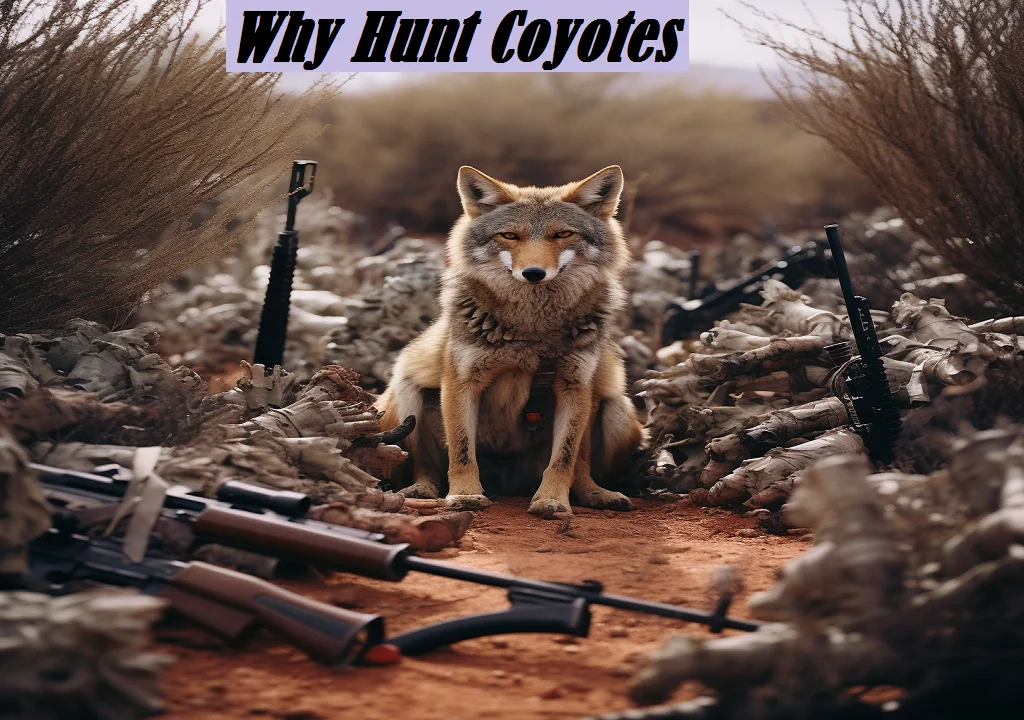
An Insightful Dive into the Controversial Practice
Table of Contents
Ah, the coyote. This elusive canine of North America has been the subject of folklore, admired for its adaptability, and often vilified for its cunning nature. Delve deep with me, and let’s explore the multifaceted reasons behind hunting them.
To many Native American cohorts, the coyote was more than just an animal. It was a symbol of wit and adaptability. Hunting them wasn’t just about sustenance; it was a ritual, a testament to one’s prowess and respect for nature.
Upon introducing livestock to the continent, the settlers inadvertently provided the coyote with new prey. Consequently, driven by the need to safeguard their investments, the settlers began hunting coyotes. This was crucial because a single coyote had the potential to wipe out an entire flock of sheep in just one night.
During the Gold Rush, settlers disrupted ecosystems. As prey animals dwindled, coyotes had to adapt and sometimes faced hunting pressures due to their newfound boldness in seeking food.
Today, farmers with livestock still find coyotes a challenge. A handful of coyotes can cause economic havoc by targeting calves, lambs, and poultry. For many, hunting is a proactive measure to protect livelihoods.
Many ecologists believe that hunting coyotes can benefit ecosystems. Firstly, an overpopulation of any species might result in reduced resources. Furthermore, it can lead to the emergence of diseased populations. Therefore, controlled hunting can serve as a measure to maintain this ecological balance.
The thrill of the chase. For many hunters, tracking a coyote is a test of skill, patience, and endurance. They value the challenge it poses, more than the trophy.
Due to rapid urbanization, coyotes have begun venturing into urban territories. Consequently, many municipalities are now contemplating controlled hunting as a means to regulate their populations and mitigate human-coyote conflicts.
For animal rights activists, every life holds sacred value. Consequently, they speak out against hunting for sport and advocate for coexistence rather than dominance.
Increasingly, the concept of responsible hunting is being recognized. This entails hunting in a way that not only ensures the species’ continued survival but also shows respect for the animal.
In an age where consuming meat is commonplace, one has to wonder: why does hunting, by contrast, elicit such powerful reactions?
Coyote fur, especially from the northern regions, is valued for its warmth and aesthetics. The fur industry sees coyotes as a valuable resource, driving a segment of the hunting.
In areas where coyote hunting is permitted, there is a noticeable boost from hunting tourism. Consequently, hunters from different regions flock to these areas, thereby bolstering the local economies. However, this trend inevitably brings up concerns regarding sustainability and ethics.
Beyond tourism, hunting supplies, guide services, and local lodging thrive during hunting seasons. A ban on coyote hunting could have cascading economic effects.
Are they apex predators or just opportunists? Understanding the coyote’s role in the ecosystem can shed light on whether hunting them helps or harms the environment.
When coyote populations are in check, other species, especially smaller predators and certain herbivores, can thrive. An imbalance can have unforeseen ecological impacts.
As we build and expand our territories, we’re encroaching on theirs. This leads to more interactions, some benign and some not so much.
Some argue against hunting and for relocation. But is relocating a territorial animal like the coyote really a solution?
Conclusion
Coyotes, like all creatures, play a role in the tapestry of our ecosystem. To hunt or not is a decision with environmental, ethical, and economic implications. As with most things in life, it’s not just black and white.
FAQs
Keeping your handgun clean is one of the most important responsibilities you have as a…
Archery has evolved dramatically over thousands of years, yet one debate continues to spark curiosity…
When you’re setting up a long-range rifle scope, one of the most important decisions you’ll…
For many shooters, the objective lens size is one of the first things they look…
For decades, the 3–9×40 rifle scope has been one of the most iconic optics used…
Tuning a compound bow can feel intimidating, especially if you’re new to archery or don’t…
This website uses cookies.